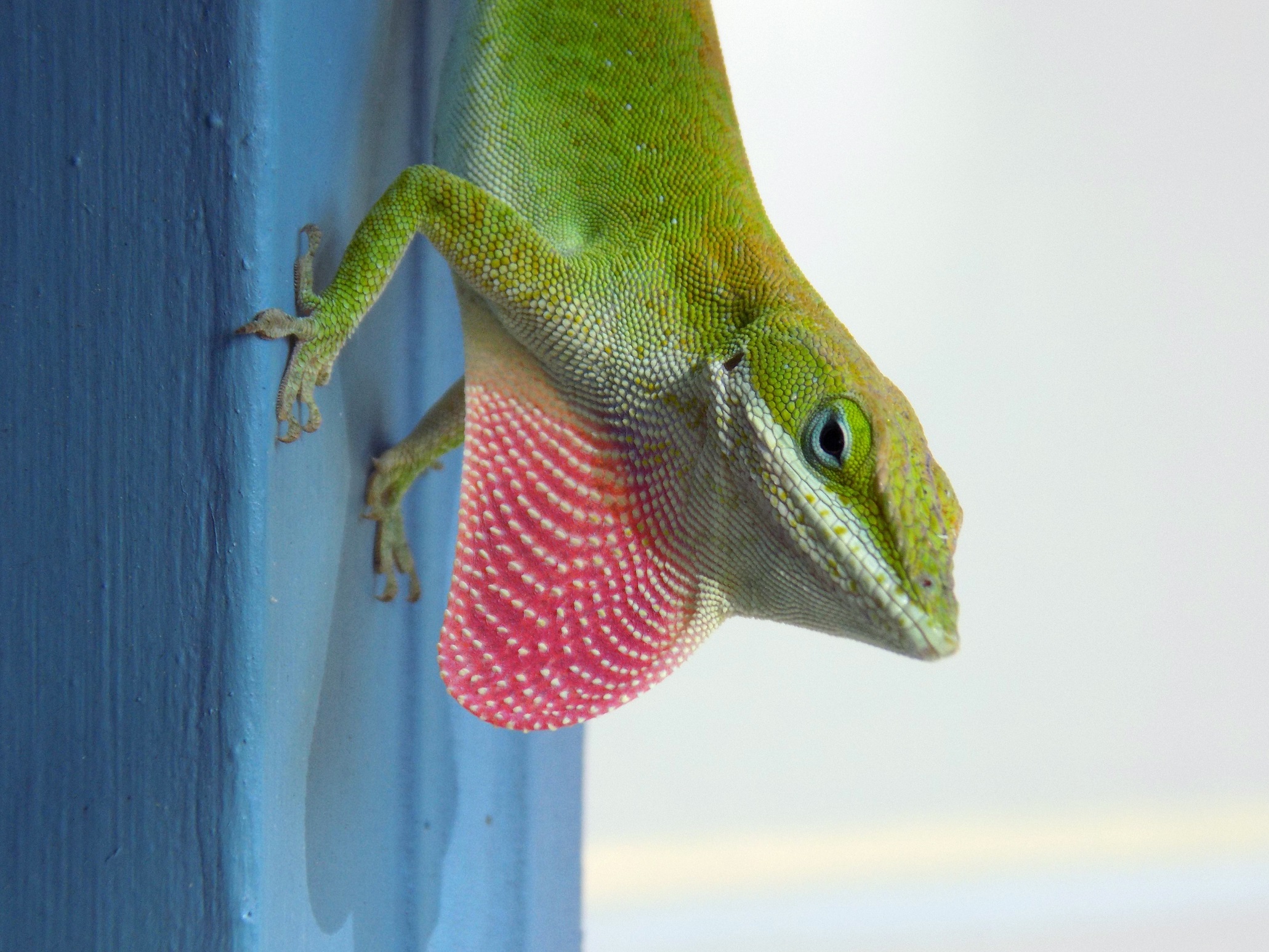

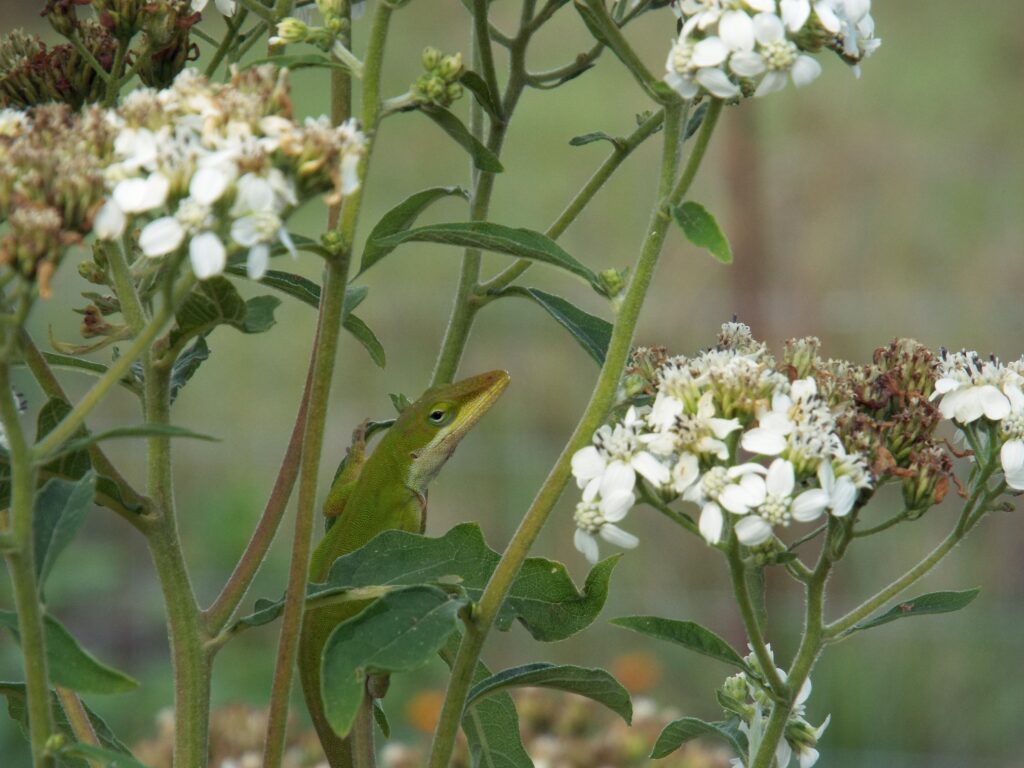
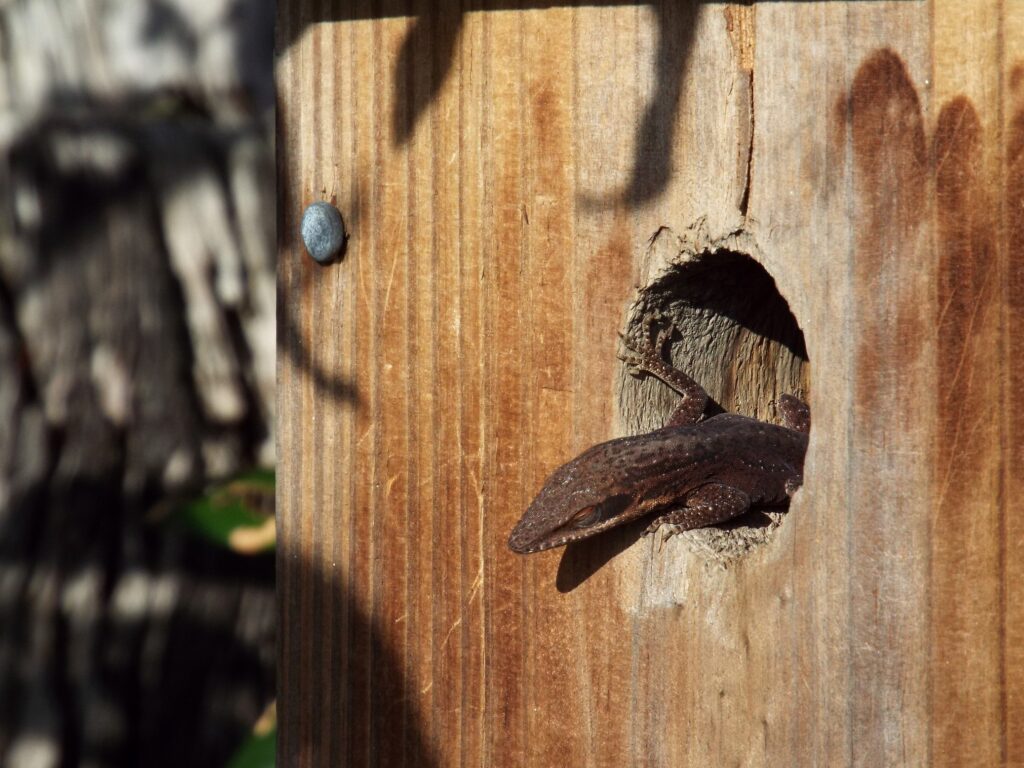
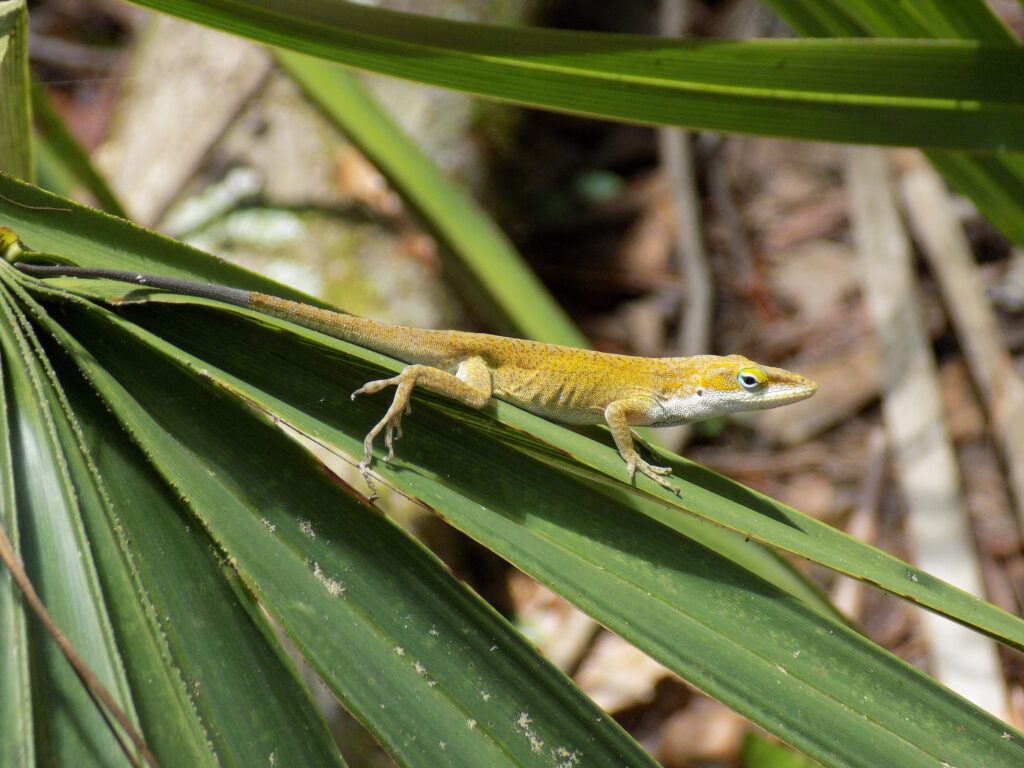
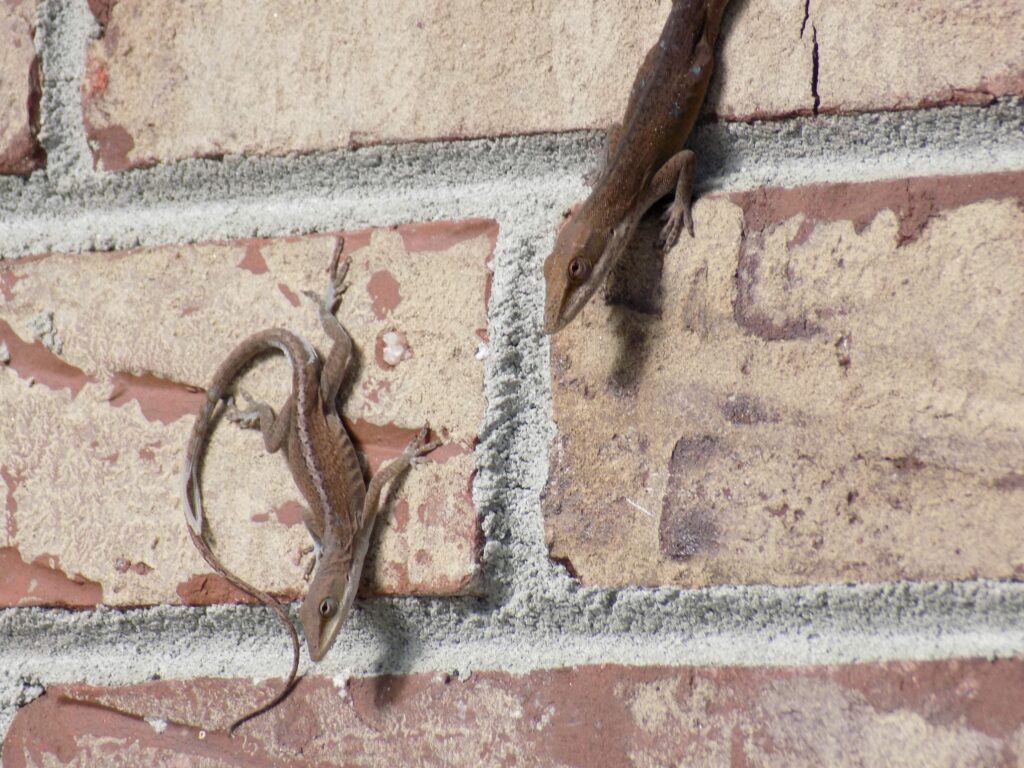
This week for Flora and Fauna Friday, we’re peering in on a critter I’m sure we’re all well acquainted with. This week we’re looking at the Carolina Anole (Anolis carolinensis).
Found from Texas to North Carolina, the Carolina, or Green, Anole is a trademark reptile of the South and found in every county in SC. They’re an arboreal insect-eating predator that hunts everywhere from urban hedges to the treetops of the most isolated oldgrowth blackwater swamps. Anoles hunt by stalking tree branches and rushing or jumping at their prey, jaws agape, and clamping down on whatever they grab. Despite how common these lizards are, they’re interesting in many ways.
Male Anoles are larger with a beefier head and possess a pink “dewlap” on their neck. Females display a white stripe down their spine. Males are very territorial during the breeding season and can often be seen confronting each other. During a standoff, males display dark patches behind their eyes, a short crest on the back of their neck, and flare their dewlap while pumping their upper bodies. These standoffs often result in fights between rivals where the two lock jaws and attempt to bite their opponent into submission. Like all of our lizards, Anoles have the ability to shed their tail to escape a predator. The shed tail will continue to wriggle on its own for over a minute. Carolina Anoles also have the ability to change their color using tiny pigment sacs below the skin called chromatophores, just like Chameleons. However, Anoles can only change from Green to Brown and they do so not for camouflage but to thermoregulate. Like all reptiles, they are ectothermic and depend on the environment for heat. Also like Chameleons, which they are unrelated to, Anoles have the ability to move their eyes independently of one another. This allows them to scan their surrounding for prey and predators much more efficiently and without moving their head. Anoles also have specialized feet, like Geckos, that allow them to scale practically any surface, including paned glass. Their foot pads are studded in lines of specialized hairs. These hairs fray at the tip, creating hundreds of contact points each. This incomprehensible degree of surface area composed of microscopic points allows Anoles to electrically adhere to a surface through even the weakest of the intermolecular forces. Think of it as atomic Velcro.